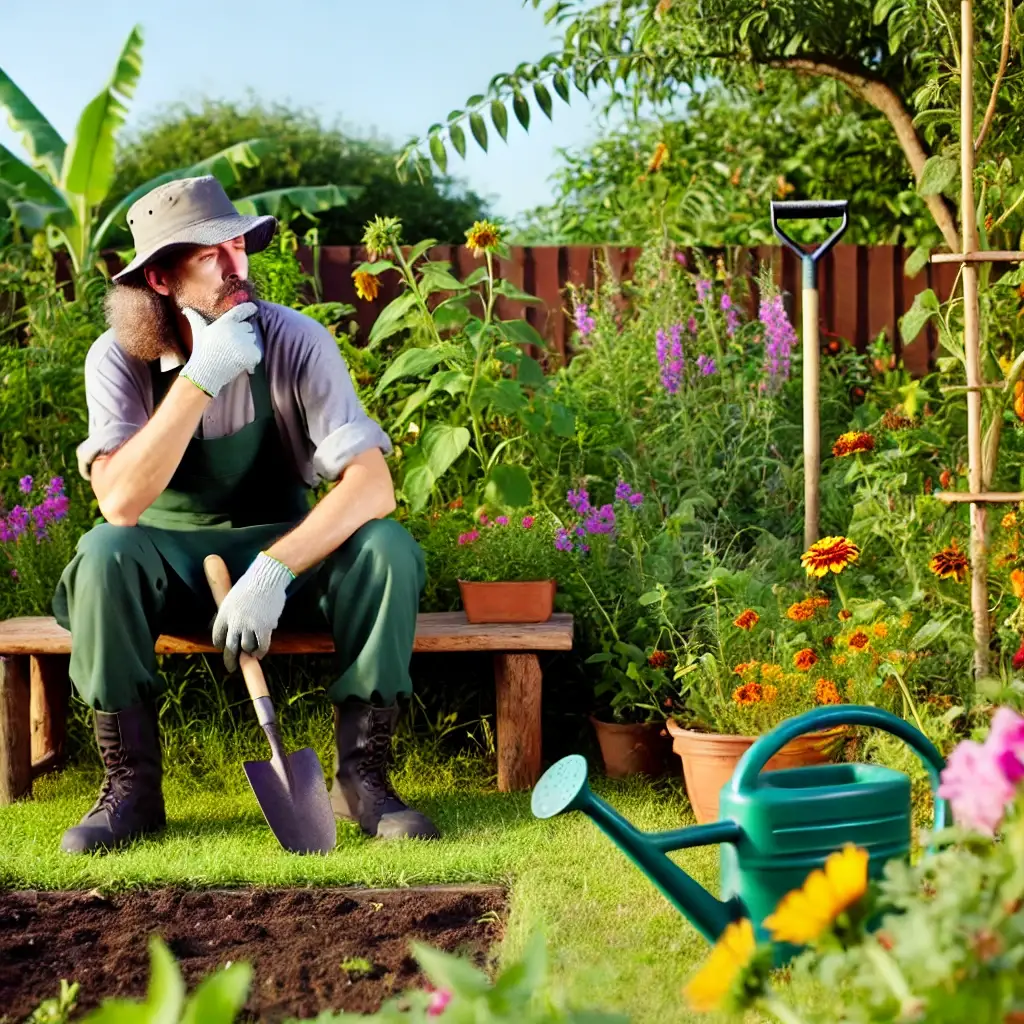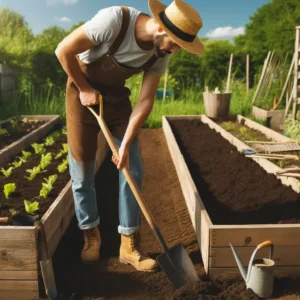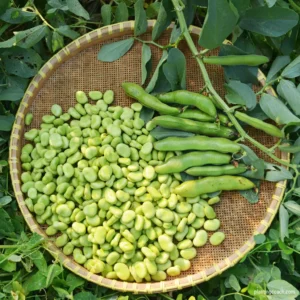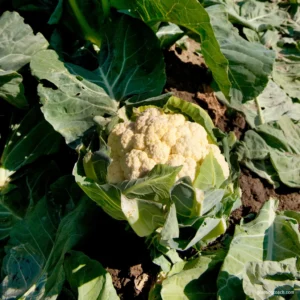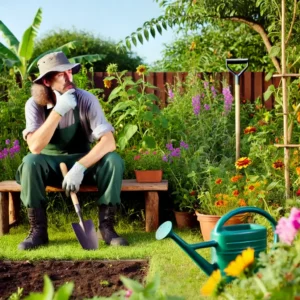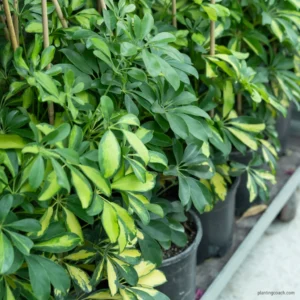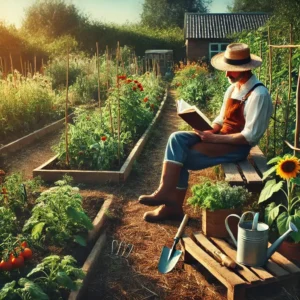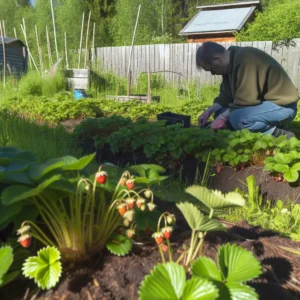Gardening is more than a hobby; it is a passion that offers numerous rewards, including the satisfaction of nurturing life, the joy of fresh produce, and the beauty of an attractive landscape. However, every gardener, from beginners to the experienced, faces challenges that can sometimes seem overwhelming. Issues such as poor soil quality, destructive pests, and irregular watering can hinder even the most well-intentioned efforts. Fortunately, each common gardening problem has a viable solution.
This guide is designed to address 9 Common Gardening Challenges and Solutions as well, which can help you overcome these hurdles. With practical advice and proven strategies, you’ll learn how to transform your gardening practices to achieve a vibrant and healthy garden. Whether dealing with pest invasions, battling extreme weather conditions, or struggling with soil that seems less than perfect, the right approach can lead to significant improvements and greater gardening satisfaction.
9 Common Gardening Challenges and Solutions
Challenge 1: Poor Soil Quality
Effective gardening begins with the soil. Poor soil quality is a common barrier to achieving lush, vigorous plant growth. It can manifest through compacted soil, poor nutrient content, improper pH levels, or inadequate drainage. These issues can weaken plants, making them more susceptible to disease and less productive.

Start with a soil test to identify specific deficiencies and imbalances to improve soil quality. Based on the results, you can amend your soil with the appropriate materials. For instance, adding organic compost can boost nutrient levels and soil structure, while applying lime can help adjust overly acidic soil conditions. It’s also beneficial to incorporate aged manure, which enriches the soil with nitrogen, improving plant growth. Regular applications of organic matter boost soil fertility and improve its water retention and aeration, promoting healthier root development. Additionally, consider practicing crop rotation and cover cropping, which naturally enrich the soil by preventing nutrient depletion and improving soil structure over time.
Challenge 2: Pests and Insects
Pests and insects can quickly turn a thriving garden into a disaster area, damaging foliage and compromising plant health. Effective pest control starts with prevention and observation. Regular garden inspections can help catch infestations early before they become severe. Implement integrated pest management (IPM) strategies for long-term prevention through biological control, habitat manipulation, and resistant varieties. Encourage beneficial insects, such as ladybugs and lacewings, which prey on harmful pests like aphids and mites.
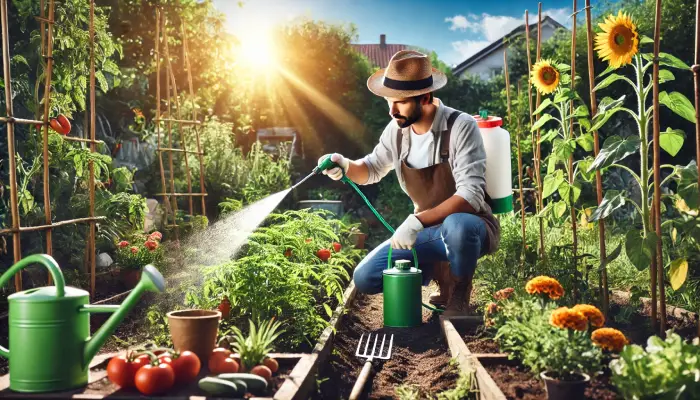
For direct intervention, opt for organic pesticides such as neem oil or insecticidal soap, which are less harmful to the environment and non-target species compared to synthetic chemicals. Additionally, physical barriers, such as row covers or netting, can protect plants from pests while allowing light and water to reach them. Cultivating a balanced garden ecosystem is key to natural pest control, reducing the need for chemical interventions and promoting a healthier garden environment.
Challenge 3: Insufficient Watering
Watering your garden correctly is crucial for plant health, yet it remains one of the most common challenges gardeners face. Both over-watering and under-watering can have detrimental effects on plant growth. Over-watering can lead to root rot and other fungal diseases, while under-watering can stress plants, reducing their growth and yield. To achieve optimal watering, it’s essential to understand the water needs of each type of plant in your garden. Implement a watering schedule that reflects the needs of your plants, considering factors such as climate, soil type, and season.
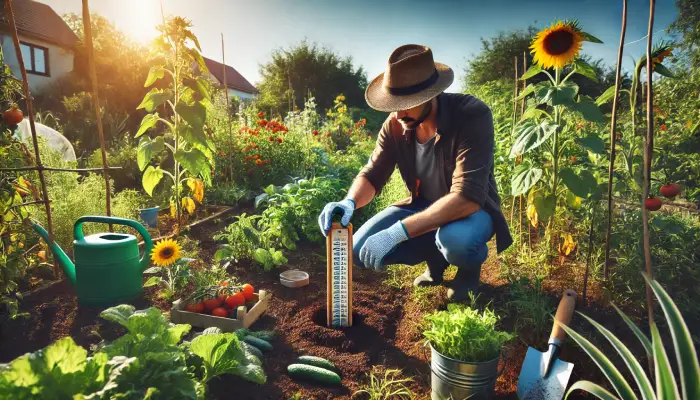
A reliable method to ensure proper soil moisture is to use a soil moisture meter, which can provide a precise measurement. Alternatively, the finger test—inserting a finger into the soil up to the second knuckle—can help determine if the soil is dry or moist. For an automated approach, consider installing a drip irrigation system, which delivers water directly to the base of the plant. This method reduces water wastage and helps in maintaining consistent soil moisture. Mulching is also practical; it helps retain soil moisture and cool roots during hot weather. Regular monitoring and adjusting your watering tactics according to the weather conditions and plant responses will help maintain optimal soil moisture levels.
Challenge 4: Weeds
Weeds are not just unsightly; they compete with your garden plants for space, nutrients, and water, hindering plant growth and reducing overall garden health. Effective weed management is essential for a healthy garden. The first step in controlling weeds is to prevent them from taking root. Applying a thick layer of mulch around your plants can suppress weed growth by blocking light, which weeds need to grow. Another effective strategy is regular weeding, which should be done carefully to avoid disturbing the roots of your garden plants.
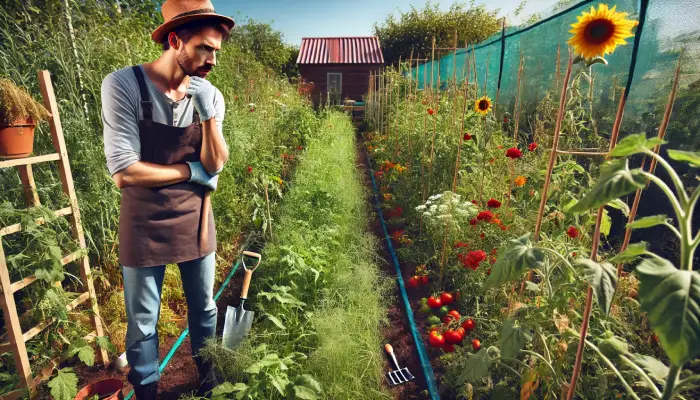
For larger areas or persistent problems, consider using landscape fabric or cover crops that can naturally suppress weed growth. If you choose to use herbicides, opt for selective types that target specific weeds without harming your plants. However, manual removal is often the most environmentally friendly and effective approach when maintained consistently. Cultivating the soil lightly can also help disrupt the early growth of weeds. Remember, keeping your garden beds clean and monitoring regularly will prevent weeds from establishing and becoming a more significant problem.
Challenge 5: Plant Diseases
Plant diseases can devastate a garden, leading to the loss of foliage, fruits, flowers, and even entire plants. To manage plant diseases effectively, start by choosing disease-resistant plant varieties whenever possible. These varieties are bred to resist specific common diseases and can significantly reduce the need for chemical interventions. Proper spacing between plants is also crucial as it ensures adequate air circulation, which can help prevent moisture buildup and reduce disease spread.
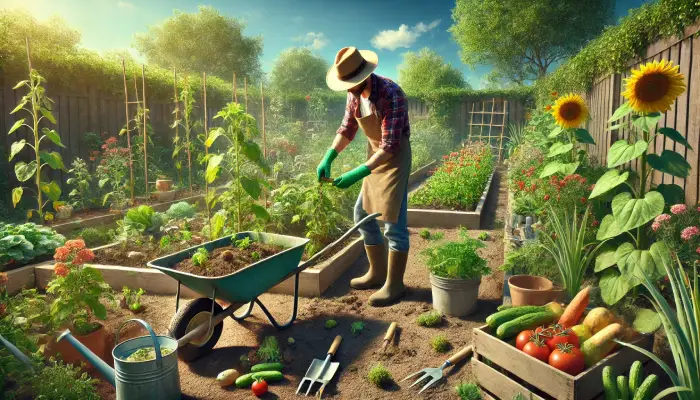
Regular monitoring of your garden for early signs of disease is essential. Look for changes in leaf color, spots, or decay, and take action before the disease spreads. If you identify diseased plants, remove and dispose of them promptly to prevent further contamination. For treatment, consider organic options like copper sprays or sulfur powders, which can control a wide range of fungal and bacterial diseases. Always follow the application instructions carefully to protect plant health and the surrounding environment.
Challenge 6: Extreme Weather Conditions
Extreme weather, including frosts, heavy rains, and scorching heat, poses significant challenges to gardeners. Each type of weather can stress plants in different ways, from freezing roots to washing away soil nutrients or causing heat stress. To mitigate these issues, it’s crucial to understand the specific needs of your plants and the typical weather patterns of your area.
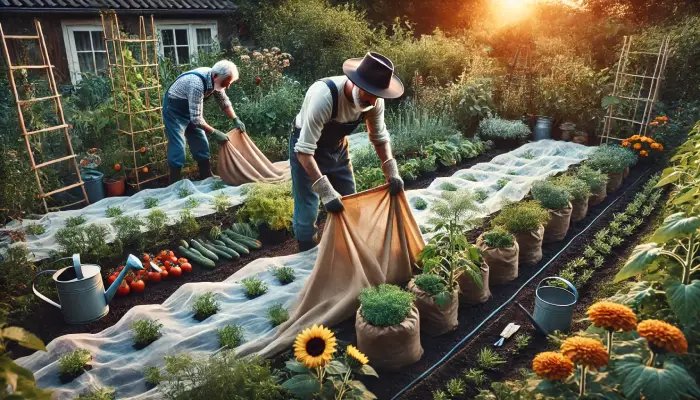
For frost, consider using frost cloths or plant blankets that can be draped over sensitive plants to provide protection during cold nights. For gardens prone to heavy rain, improve drainage by amending the soil with sand or organic matter, and consider installing raised beds or drainage channels to prevent waterlogging. In areas with high heat, provide shade using cloth screens or strategically planted trees to shield plants from the harshest midday sun. Additionally, mulching can help retain moisture in the soil during dry spells and protect roots from temperature extremes.
Adapting to your local climate by choosing plants that are naturally more resistant to these conditions can also significantly reduce the challenges associated with extreme weather. Regularly updating your gardening strategies to accommodate weather forecasts can keep your garden thriving regardless of the conditions.
Challenge 7: Limited Space
Urban dwellers or those with smaller outdoor spaces often believe that a fruitful garden is out of their reach, but numerous innovative solutions exist for gardening in limited spaces. Vertical gardening is a superb option for growing upwards instead of outwards, utilizing trellises, wall-mounted planters, or hanging baskets to maximize space efficiently.
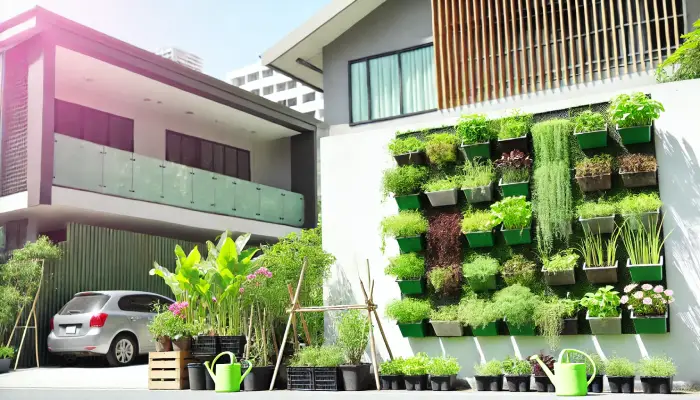
Container gardening is another effective method. It allows for the cultivation of a variety of plants in pots that can be arranged on balconies, patios, or driveways. Choosing compact or dwarf plant varieties can also help maximize yield in a small area. Additionally, incorporating stackable or tiered planting systems can further ensure excellent vertical space utilization.
Utilising community garden spaces is another avenue to consider, providing additional gardening space and a social network of gardeners for advice and sharing resources. By thinking creatively about the configuration and possibilities of your space, you can transform even the smallest areas into productive green zones.
Challenge 8: Fertilization Problems
Fertilizing is essential for promoting healthy plant growth, but it’s easy to run into issues like under-fertilizing, which can lead to stunted growth, or over-fertilizing, which might burn roots and push plants to grow too quickly at the expense of their health. Understanding the specific nutrient needs of your plants and the right type of fertilizer to use is crucial.
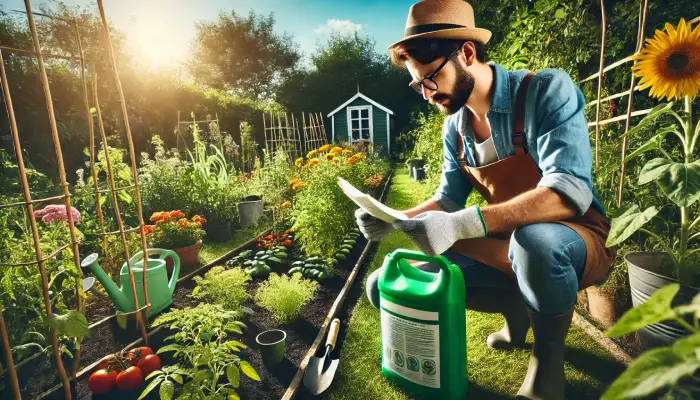
A soil test can be invaluable in this regard. It will show the current nutrient levels in your soil and help you determine exactly what type of fertilizer (organic or synthetic) and how much to apply. Slow-release fertilizers are an excellent choice for providing a steady supply of nutrients without the risk of over-application. Alternatively, organic fertilizers such as compost, manure, or bone meal release nutrients slowly and improve soil structure.
Application timing also matters; fertilizing during the growing season when plants actively absorb nutrients will ensure the fertilizers have the most significant positive impact. Being mindful of the manufacturer’s instructions and avoiding application before heavy rain (which can wash away nutrients) will help prevent common fertilization errors.
Challenge 9: Lack of Pollination
Pollination is essential for the production of fruits and seeds. Still, it can be challenging in urban environments or enclosed spaces where natural pollinators like bees and butterflies are less prevalent. To accelerate pollination, attract pollinators by planting a variety of flowering plants that bloom at different times throughout the growing season. This not only provides a continuous food source for pollinators but also beautifies your garden.

For gardens where natural pollinator numbers are low, consider manually pollinating plants by using a small brush to transfer pollen from one flower to another. This is particularly effective for plants like tomatoes and peppers. Additionally, creating habitats that attract pollinators, such as installing bee hotels or leaving a small wildflower patch, can encourage their presence in your garden.
Maintaining a diverse plant population, avoiding pesticides that could harm beneficial insects, and providing water sources like a shallow bird bath can also support a healthy pollinator ecosystem in your garden.
Summary
Gardening is a fulfilling activity that requires patience and persistence, especially when faced with common challenges that can impede your success. By understanding and addressing issues such as poor soil quality, pest infestations, irregular watering, and extreme weather conditions, you can greatly improve the health and productivity of your garden. Solutions such as improving soil fertility, implementing integrated pest management, using innovative watering systems, and adapting to environmental conditions help solve these problems and improve the overall gardening experience. Remember, every problem has a solution, and with the right knowledge and tools, you can overcome these challenges and enjoy a thriving garden.
FAQ
Q1: What is the most effective way to improve soil quality quickly?
Incorporating organic compost or well-rotted manure can quickly improve soil quality by boosting its nutrient content and developing its structure.
Q2: How can I naturally deter pests without harming my plants?
Encouraging beneficial insects, using barriers such as row covers, and applying natural remedies like neem oil are effective strategies for managing pests naturally.
Q3: What are some signs of over-watering in common garden plants?
Signs of over-watering include yellowing leaves, wilting despite wet soil, and root rot, which often manifests as a foul smell from the soil.
Q4: Are there any foolproof methods to prevent plant diseases?
While no method is foolproof, practices like rotating crops, ensuring proper spacing, and using disease-resistant varieties can significantly reduce the risk of plant diseases.
Q5: What are the best plants for extreme climates?
Plants like sedum and lavender are excellent for dry climates due to their drought tolerance, while ferns and hostas perform well in cooler, shaded environments.
